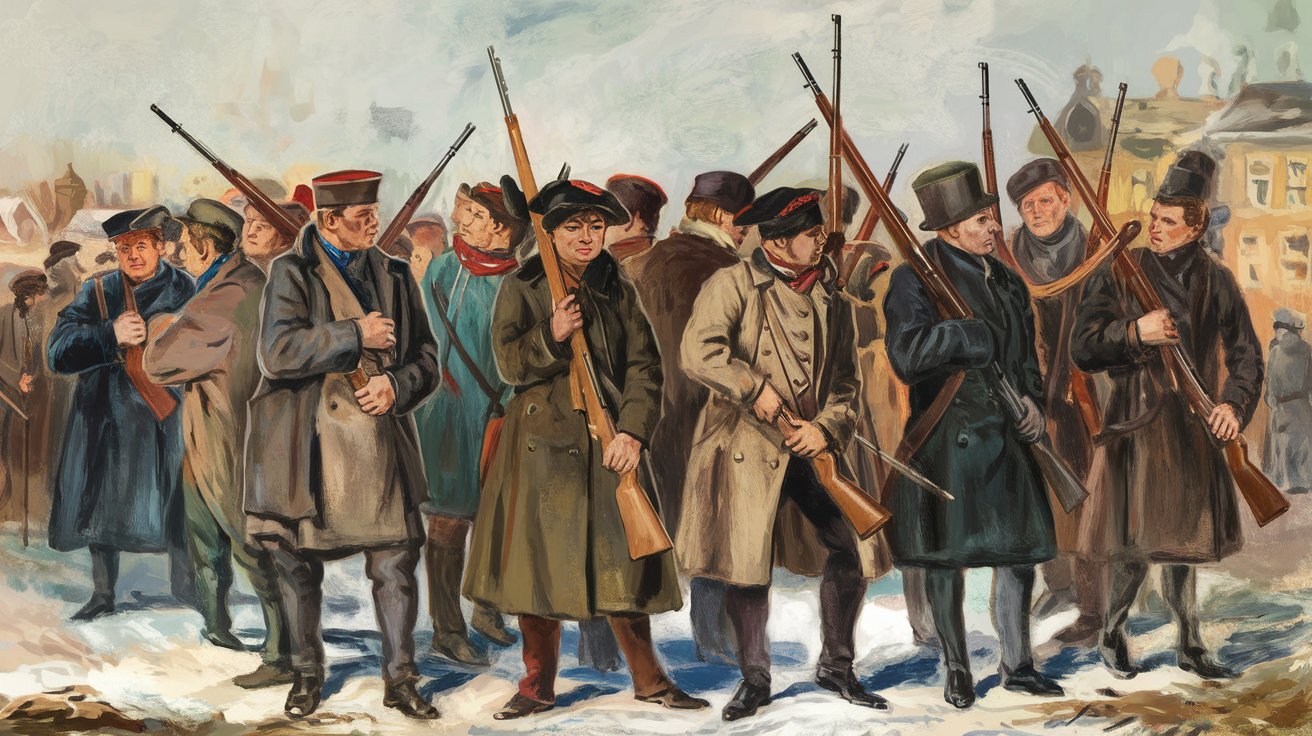
The Muromtsevsky Uprising was a significant event in Russian history, yet many people know little about it. This revolt took place in the early 20th century, during a period of intense social and political upheaval. Why did this uprising happen? The main reasons were widespread dissatisfaction with the government, poor living conditions, and a desire for greater autonomy. The uprising saw local peasants and workers banding together to challenge the authorities. What were the outcomes? Though ultimately suppressed, the Muromtsevsky Uprising highlighted the growing unrest in rural Russia and set the stage for future revolutionary movements. Dive into these 25 facts to understand the causes, key players, and lasting impact of this pivotal moment in history.
Key Takeaways:
- The Muromtsevsky Uprising was a peasant revolt in 1905 Russia, highlighting social and economic grievances. It inspired further resistance and led to significant political changes, including the establishment of the State Duma.
- This uprising showed the power of collective action and the limitations of the Tsarist regime. It remains a symbol of the struggle for justice and equality, shaping the course of Russian history.
What Was the Muromtsevsky Uprising?
The Muromtsevsky Uprising was a significant event in Russian history, reflecting the social and political unrest of the time. This revolt took place in the early 20th century and had far-reaching consequences. Here are some fascinating facts about this historical event.
- The Muromtsevsky Uprising occurred in 1905, during a period of widespread social and political turmoil in Russia.
- It was named after the Muromtsevsky District in the Omsk region, where the uprising primarily took place.
- The revolt was part of the larger Russian Revolution of 1905, which saw numerous uprisings and strikes across the country.
- Peasants and workers were the main participants in the Muromtsevsky Uprising, protesting against oppressive conditions and demanding better rights.
- The uprising was fueled by widespread dissatisfaction with the autocratic rule of Tsar Nicholas II.
- Economic hardships, including poor harvests and high taxes, contributed to the unrest among the rural population.
- The Muromtsevsky Uprising was one of many peasant revolts that highlighted the deep-seated issues within the Russian Empire.
- Participants in the uprising sought to address issues such as land redistribution and fairer treatment by local authorities.
- The revolt saw violent clashes between the peasants and government forces, resulting in numerous casualties.
- Despite the violence, the Muromtsevsky Uprising did not achieve its immediate goals, as the government swiftly suppressed it.
- The uprising, however, did contribute to the broader revolutionary movement, inspiring further resistance against the Tsarist regime.
- The events of 1905, including the Muromtsevsky Uprising, eventually led to significant political changes in Russia.
- One of the key outcomes was the establishment of the State Duma, a legislative body intended to provide some representation for the people.
- The Muromtsevsky Uprising highlighted the need for agrarian reforms, which became a central issue in Russian politics.
- The revolt also underscored the importance of addressing the grievances of the rural population to maintain social stability.
- Historians view the Muromtsevsky Uprising as a precursor to the more significant revolutions that would follow in 1917.
- The uprising is remembered as a symbol of the struggle for justice and equality in Russian history.
- The Muromtsevsky Uprising demonstrated the power of collective action in challenging oppressive systems.
- It also showed the limitations of the Tsarist regime in addressing the needs and demands of its people.
- The revolt had a lasting impact on the political consciousness of the Russian population, particularly among the peasantry.
- The Muromtsevsky Uprising is often studied as part of the broader context of revolutionary movements in early 20th-century Russia.
- The events of the uprising were documented by contemporary writers and journalists, providing valuable insights into the period.
- The legacy of the Muromtsevsky Uprising continues to be a subject of interest for historians and scholars.
- The uprising serves as a reminder of the importance of addressing social and economic inequalities to prevent unrest.
- The Muromtsevsky Uprising remains a significant chapter in the history of Russian revolutionary movements, illustrating the complexities of the struggle for change.
Final Glimpse at the Muromtsevsky Uprising
The Muromtsevsky Uprising remains a significant chapter in Russian history. This event, marked by the courage and determination of the peasants, showcases the struggle for justice and equality. Understanding these historical events helps us appreciate the complexities of past societies and the resilience of those who fought for change. The uprising's impact on local governance and social structures can't be overstated. It serves as a reminder of the power of collective action and the importance of standing up against oppression. By reflecting on these facts, we gain a deeper insight into the human spirit and the relentless pursuit of freedom. Whether you're a history buff or just curious, the Muromtsevsky Uprising offers valuable lessons and a fascinating glimpse into a pivotal moment in time.
Frequently Asked Questions
Was this page helpful?
Our commitment to delivering trustworthy and engaging content is at the heart of what we do. Each fact on our site is contributed by real users like you, bringing a wealth of diverse insights and information. To ensure the highest standards of accuracy and reliability, our dedicated editors meticulously review each submission. This process guarantees that the facts we share are not only fascinating but also credible. Trust in our commitment to quality and authenticity as you explore and learn with us.
